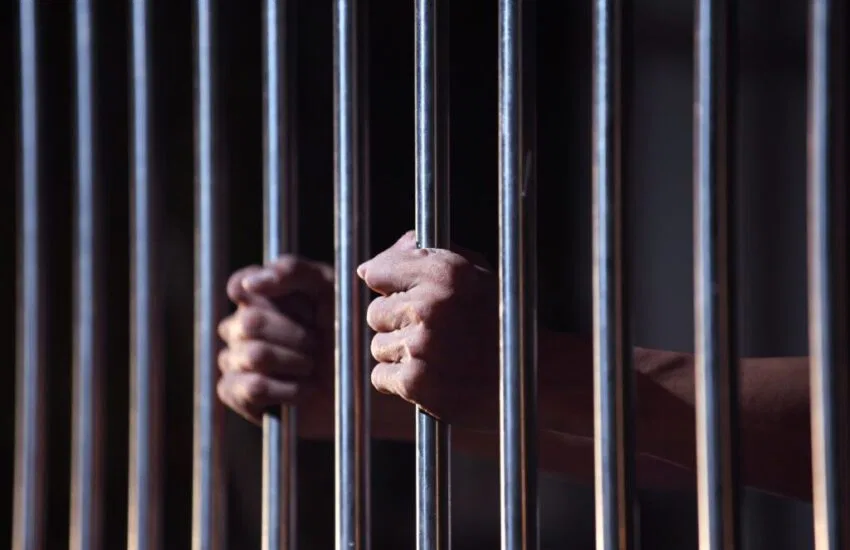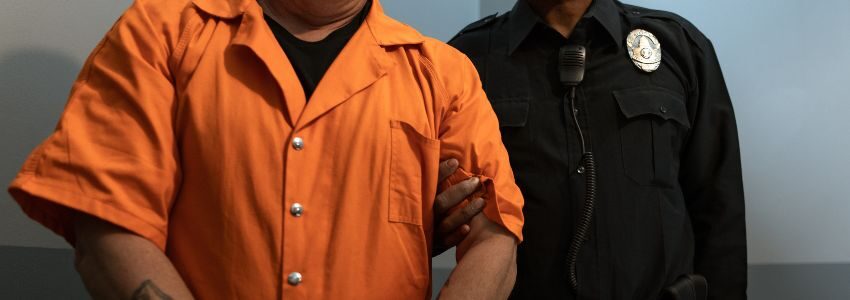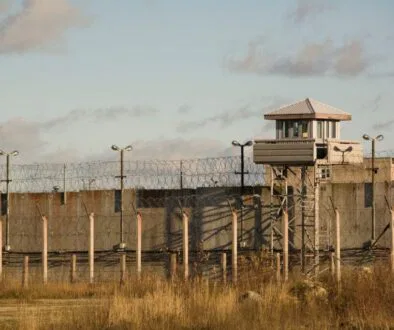Wrongful Conviction: Most horrifying Cases and More

Published March 8, 2024
Imprisonment is one of the most horrifying things to happen to a person. With it, all of a sudden, you’re stripped of your freedom. While justice needs to be served, it is at rock bottom for many criminals. Imprisonment is even more horrible when one is convicted of a crime they did not commit. It is a saddening miscarriage of justice.
This article will look at the worst wrongful conviction cases in the USA. These cases are horrific. They caused an innocent person and their loved ones immense harm. And it is in aspects such as psychological, financial, and physical. Most importantly, they stripped the ignorant of their freedom.
Let’s waste no more time and get started.
What Is a Wrongful Conviction?
The strength of our criminal justice system is anchored on its accuracy. It relies on its capacity to convict the guilty. And to clear the innocent.
Wrongful convictions happen. Ruling and understanding its causes is critical. It will sustain the integrity of our justice system.
A conviction may be described as wrongful for two reasons:
- The person accused is factually innocent of the crimes and charges.
- There were procedural errors that violated a person’s rights.
Causes of Wrongful Convictions; Why Do Wrongful Convictions Happen
1. Mistaken witness I.D.
Eyewitness error. It is the single most significant reason for wrongful convictions nationwide. It makes for 72% of convictions overturned through DNA testing.
Eyewitness testimony can be persuasive proof before a jury or judge. Yet, 30 years of robust social science research has validated that eyewitness identification is often reliable.
The human mind is not like a tape record. We do not record events accurately as we see them. We do not recall them like a tape that has been rewound.
Witness memory is the same as any other proof at a crime scene. It must be preserved carefully. It requests methodological retrieval. Otherwise, it can be contaminated.
In case after case, DNA has proven that it is frequently inaccurate.
2. False confession
In about 30% of DNA exoneration ocassions, innocent defendants crafted incriminating statements, delivered outright confessions, or pleaded guilty. They show that internal knowledge and actual guilt do not always prompt confessions. External influences otherwise pursue them.
3. False forensic evidence
DNA analysis has aided in ruling the guilty and exonerating the innocent nationwide. Yet, it has never been subjected to rigorous scientific evaluation. Meanwhile, forensics techniques that have been appropriately validated are sometimes improperly done. Moreover, they may inaccurately be conveyed in trial testimony.
This suggests that forensic analysts can sometimes fabricate results. Also, engage in other misconduct.
4. Perjury
In 18% of wrongful convictions overturned by means of DNA testing, an informant testified against the defendant at the original trial.
5. Official misconduct
Some wrongful convictions are born due to honest mistakes.
In many situations, the people accountable for uplifting truth and justice lose sight of these obligations. Law enforcement and prosecutors can sometimes fixate solely on securing convictions.
The cases of wrongful convictions unraveled by DNA testing are abundant with evidence of negligence, fraud, or misconduct. They are with prosecutors and police departments alike.
Wrongful Conviction Cases
1. The Central Park 5
Known as the Exonerated Five, it is a well-known example of wrongful conviction. The group was composed of five teenagers. They were Antron McCray, Kevin Richardson, Yusef Salaam, Raymond Santana, and Korey Wise. The five were accused of beating along raping a white female jogger in Central Park. It took place in 1989.
The boys, aged between 14 and 16 at that time, were coerced into making false confessions. They later revealed that they had been intimidated and lied to by police.
In 2002, Matias Reyes, a convicted serial rapist and murderer, confessed to the crime. His DNA matched the evidence from the crime scene. The five men were acquitted.
Following their release, they sued New York City for wrongful conviction along with violation of their civil rights. They won a $41 million settlement in 2014. Today, members of the Exonerated Five continue to advocate for justice reform.
2. Henry McCollum and Leon Brown
Henry McCollum and Leon Brown, two African American men, were wrongfully convicted and sentenced to death. It took place in North Carolina for the rape as well as the murder of an 11-year-old girl in 1983. The brothers, both with intellectual disabilities, gave coerced, conflicting, and patently false confessions. It is hours after intense interrogation.
Despite winning a new trial in 1991, their fight for justice prevailed. In August 2015, the brothers filed a federal civil rights suit demanding damages for their wrongful incarceration.
2014, they were acquitted because of new DNA evidence that implicated another suspect. This was after spending over 30 years on death row. It was one of the longest sentences in American history served by wrongfully convicted individuals.
In May 2021, a North Carolina jury awarded McCollum and Brown $75 million for their wrongful capital convictions.
3. Duke University Lacrosse Team
In 2006, three members of the Duke University lacrosse team were falsely accused of raping Crystal Mangum. She was a woman hired as a stripper for a team party. The case quickly garnered media attention. It is a perfect example of racial and social implications. It is as if the accused were white and the accuser was African-American.
Durham County District Attorney Mike Nifong led the prosecution. Yet, he was later found guilty of criminal contempt. It is for knowingly crafting false statements during the proceedings.
2007, the North Carolina attorney general declared the three accused players innocent. It states the lack of evidence and unreliable testimony from Mangum.
4. Steven Avery
Steven Avery, a Wisconsin native, has been at the center of one of the most high-profile wrongful conviction cases in recent years. His story was widely publicized in the Netflix documentary “Making a Murderer.”
In 1985, at the age of 22, Avery was unfairly accused of rape and attempted murder. He suffered almost 20 years in prison. He was freed through DNA testing in 2003.
After his release, Avery filed a $36 million civil lawsuit against the Manitowoc County Sheriff’s Department for his false conviction. Yet, in 2005, while his civil lawsuit was pending, Avery was arrested. He was then convicted for the murder of Teresa Halbach. She was a photographer who had visited his property.
Avery’s new conviction has been marred with converse and misconduct allegations. His defense attorney has been actively challenging the validity of his sentence. They were arguing that Avery was framed for Halbach’s murder.
5. Ryan Ferguson
Ryan Ferguson is an American man who was unlawfully convicted of a 2001 murder in his hometown. He suffered nearly a decade in prison before his conviction was overturned.
At the age of 19, Ferguson was convicted for the murder of Kent Heitholt. The victim was a sports editor. This conviction was based hugely on the testimony of Charles Erickson. He was a classmate who claimed he and Ryan committed the crime together while they were both drunk.
Yet, there were significant issues with Erickson’s testimony. It includes discrepancies and inconsistencies that led many to believe he had been coerced into confessing.
2013, after years of appeals and legal battles, the Missouri Court of Appeals Western District vacated Ferguson’s conviction. He cited that the prosecution had withheld material evidence from the defense. He was released from prison on November 12, 2013.

ADVERTISEMENT
Frequently Asked Questions About Wrongful Conviction
1. How many cases are wrongfully convicted?
Wrongful convictions are a significant dilemma in the United States. The National Registry of Exonerations reported 233 exonerations in 2022. This figure only includes known exonerations. It does not represent the total number of wrongful convictions. Some estimates suggest that 1% of the U.S. prison population, approximately 20,000 people, maybe falsely convicted.
2. Which country has the most wrongful convictions?
The United States appears to have the highest number of wrongful convictions.
3. Who is the longest innocent person in jail?
The person who spent the longest time in prison before being exonerated is Glynn Simmons. He was wrongfully imprisoned for 48 years, one month, and 18 days for murder. This makes him the longest-incarcerated person in the U.S. to be forgiven.
4. What is the bias of wrongful convictions?
- Racial and ethnic bias
- Socioeconomic bias
- Confirmation bias
- Witness bias
- Forensic bias
- Gender bias
Wrongful convictions are a saddening dilemma that it pains to know its existence. No one should ever go through it. Thus, awareness of it is crucial as it starts a conversation about it.
Reduce Your Jail Call Costs By Up To 90% Per Minute With GlobalTel
GlobalTel’s inmate calling service lowers jail call per minute rates by up to 90% for jail calls from US facilities. Sign up now and use the special jail call phone number we create for you to eliminate the long distance jail call fees. Try GlobalTel for only $45.99 for 90 days. Make US/domestic and international jail calls at the local rate and stay connected to your incarcerated loved ones for less. Learn more about how to sign up for calls from inmates here.

This Content Is Fact Checked
Our esteemed team of specialists has thoroughly validated the accuracy of this information. Discover further details about the rigorous editorial guidelines for our website here.
ADVERTISEMENT

About The Author
I am Tracy Gorman, a seasoned writer with a passion for crafting content on various subjects. I possess the expertise to delve into any niche and deliver exceptional articles.




